The Economics and Statistics Division maintains archives of previous publications for accountability purposes, but makes no updates to keep these documents current with the latest data revisions from Statistics Canada. As a result, information in older documents may not be accurate. Please exercise caution when referring to older documents. For the latest information and historical data, please contact the individual listed to the right.
<--- Return to Archive
For additional information relating to this article, please contact:
May 03, 20172016 CENSUS: POPULATION COUNTS BY AGE Today, Statistics Canada has released the second set of results from the 2016 Census, including population by detailed age and sex for Canada, provinces, territories, and sub-provincial areas. Among the provinces, Nova Scotia had the third oldest average age at 43.5, behind Newfoundland and Labrador and New Brunswick. With the exception of British Columbia, provincial populations generally get younger as you move west across the country. Only the Prairie provinces had average ages below the national average, with the youngest in Alberta, while Ontario was equal to the average. The rest were older.
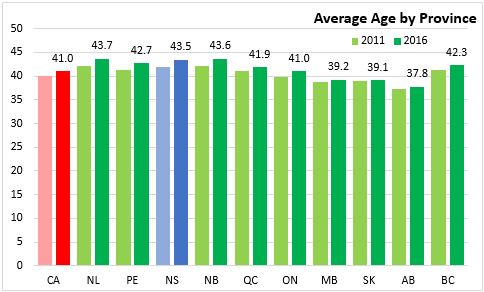
Among Nova Scotia counties, Halifax had the youngest average age at 40.9, just below the national average of 41.0. All other counties had average ages older than the national average.

The number of seniors (age 65+) surpassed the number of children (ages 0-14) in Nova Scotia in the 2011 Census. In the 2016 Census, that gap continued to widen, as children's share of the provincial population fell from 15.0 to 14.5 per cent and senior's share rose from 16.6 per cent to 19.9 per cent. In Canada, the number of seniors has surpassed the number of children on the 2016 Census for the first time.

From the 2011 to 2016 Census, the working age population (ages 15-64) declined as a share of the total population in both Nova Scotia and Canada. In Nova Scotia, the working age share of the population declined from 68.4 per cent to 65.6 per cent. In Canada, it fell from 68.5 to 66.5 per cent.

Looking across the country, Nova Scotia has the second lowest proportion of its population under the age of 15 at 14.5 per cent, just above Newfoundland and Labrador at 14.3 per cent. Conversely, Nova Scotia was tied with New Brunswick for the highest proportion of its population aged 65 or over at 19.9 per cent.
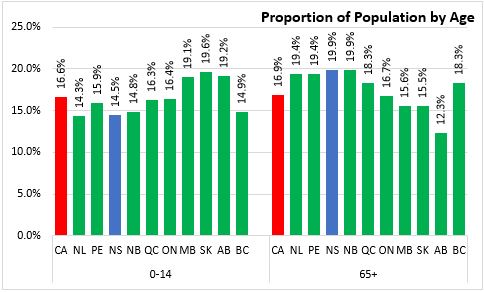
The working age population accounted for 65.6 per cent of the total in Nova Scotia, the fifth highest among the provinces.
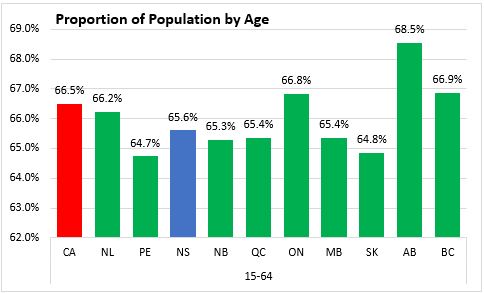
From 2011 to 2016, the four Atlantic provinces experienced declines in the number of children, with the fastest decline in Nova Scotia (-3.2 per cent), compared to an increase of 4.1 per cent nationally. Along with Quebec, the four Atlantic provinces also experienced a decline in their working age population, with Nova Scotia's down 3.8 per cent, compared to national growth of 2.0 per cent. All provinces experienced an increase in the number of people aged 65 and over, with the fastest growth in Newfoundland and Labrador, Alberta, and British Columbia. Nova Scotia's number of seniors grew by 19.9 per cent, just below the national average of 20.0 per cent.

Age structure of a population indicates potential contribution to the labour supply. The dependency ratio measures children and seniors as a proportion of the working age population. Since the 1960s, Canada and Nova Scotia's dependency ratios had been falling as the baby boom generation aged into working age. From the 2011 to the 2016 Census, the dependency ratio has risen in both Canada and Nova Scotia.
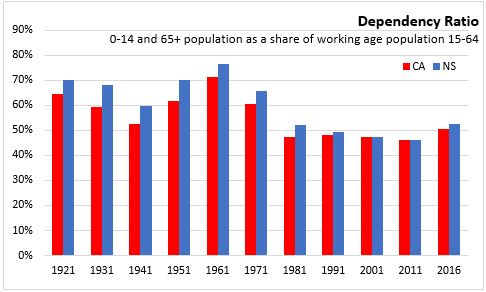
Across the country, every province experienced an increase in its dependency ratio from the 2011 to the 2016 Census.
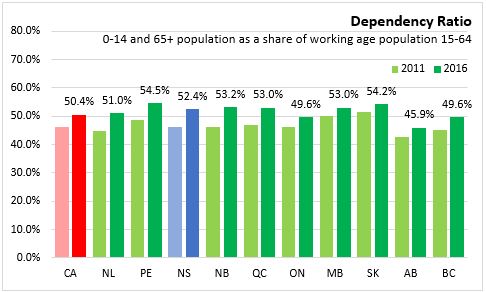
Among Canada's metropolitan areas, Halifax has among the highest proportions its population accounted for by working age individuals, with relatively low shares of its population accounted for by children and seniors.
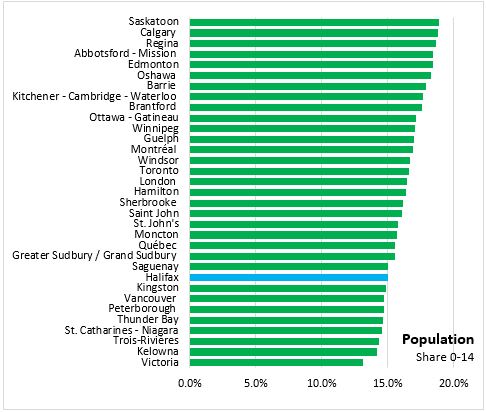
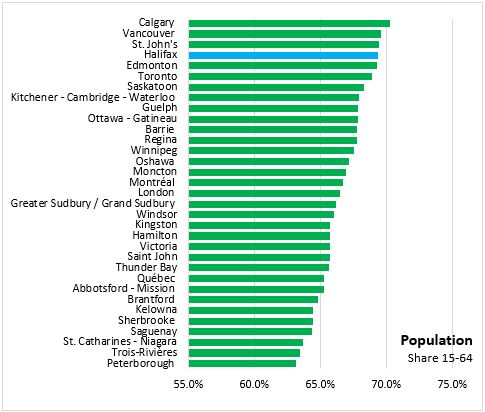
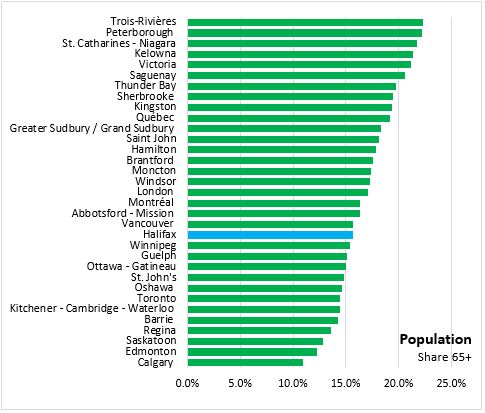
Among Nova Scotia's counties, Halifax has the highest proportion of working age population and lowest proportion of seniors, as well as one of the highest proportions of children. Hants county has the highest proportion of children while Guysborough county has the highest proportion of seniors.
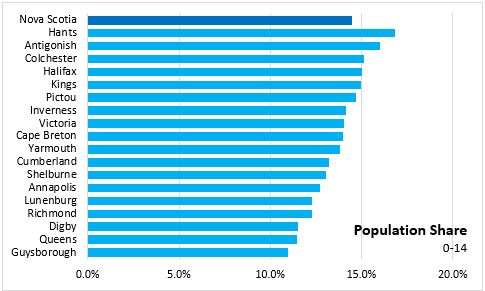
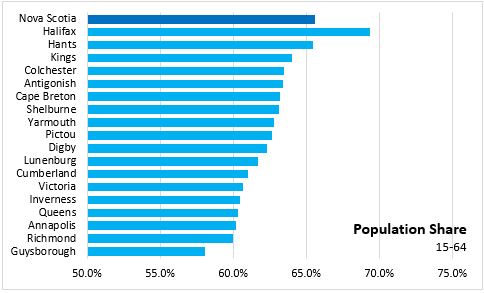
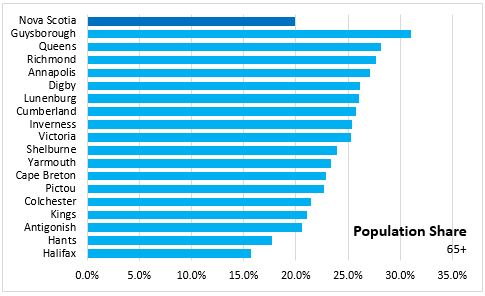
The tables below show a breakdown of census population by children, working age, and seniors, as well as the average age for counties and census sub-divisions in Nova Scotia. Note that the sub-divisions within a county should sum to the county totals in theory, however due to rounding errors and a few very small sub-divisions for which data was unavailable, they may not sum to the exact county totals. Data is unavailable for several very small census sub-divisions, all of which are categorised as Indian reserves, namely New Ross (Lunenburg), Pennal (Lunenburg), Ponhook Lake (Queens), Wildcat (Queens), Bear River (Annapolis), Beaver Lake (Halifax), Sheet Harbour (Halifax), Shubenacadie (Halifax), Wallace Hills (Halifax), and Merigomish Harbour (Pictou).
Note that many of the sub-division names (as defined by Statistics Canada) do not match up with the names of local communities in an obvious way. For reference, see this map of Nova Scotia's census sub-divisions. Note that the map file may take a minute to load.

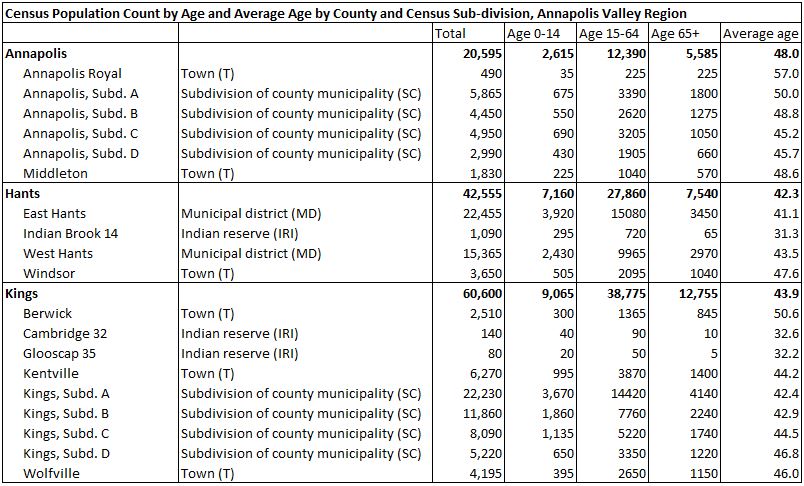

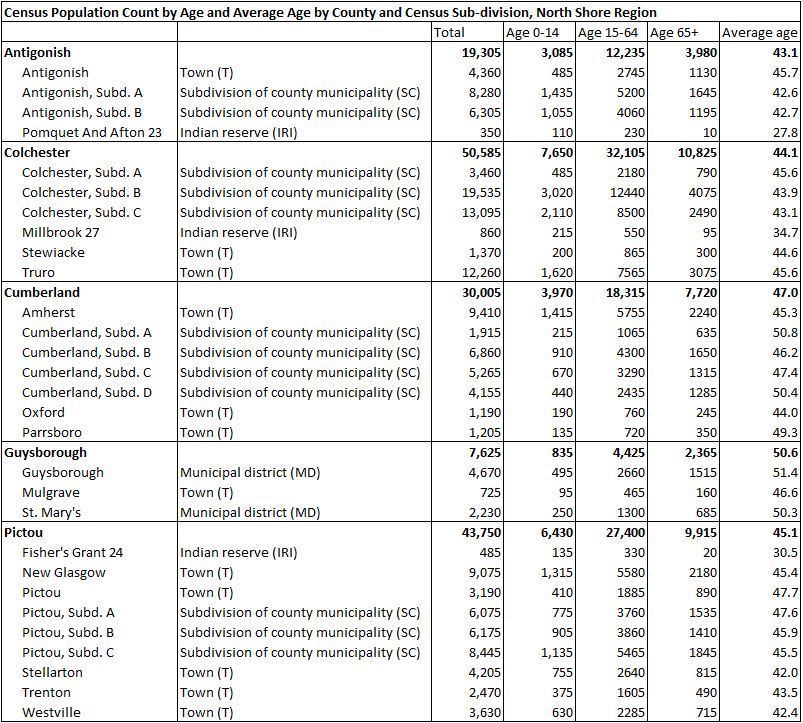
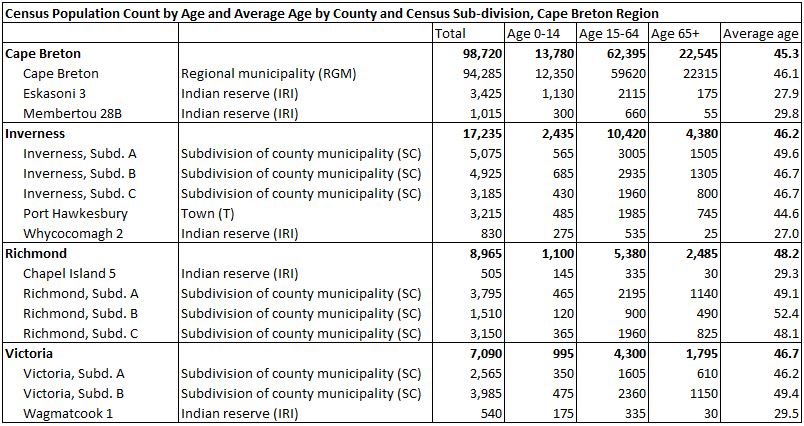
Source: Statistics Canada - 2016 Census Population by Age and Sex; Data tables
<--- Return to Archive